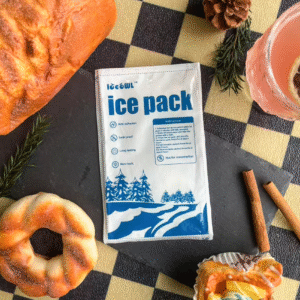Shipping perishable goods across the country requires precision and careful planning to ensure products stay within the required temperature range. Dry ice packs are one of the most effective solutions to maintain cold temperatures throughout transit. This guide delves into best practices, regulatory considerations, packaging techniques, and the advantages of using dry ice for cross-country shipping in 2025.
What Are Dry Ice Packs and Why Are They Ideal for Cross-Country Shipping?
La glace sèche est un dioxyde de carbone solide (Co₂) that sublimes directly from solid to gas, creating an extremely low temperature of -78.5°C (-109.3°F). This property makes dry ice packs perfect for maintaining frozen conditions during long-distance shipping. Commonly used for pharmaceuticals, nourriture, et biotechnologie, dry ice ensures that temperature-sensitive goods remain at optimal temperatures without the risk of liquid water damage.
-
Médicaments: Essential for transporting vaccines, biologique, and temperature-sensitive medicines.
-
Nourriture: Ensures that frozen foods like seafood and meats arrive in excellent condition, Empêcher la détérioration.
-
Biotechnologie: Crucial for biological samples and experimental materials that require precise temperature control.
How Does Cross-Country Shipping with Dry Ice Packs Work?
Shipping with dry ice involves multiple steps to ensure that goods stay frozen throughout their journey. Here’s how it works:
1. Packing the Shipment
-
Products are placed inside insulated packaging with dry ice packs. The insulation prevents external heat from affecting the goods, while the dry ice helps maintain subzero temperatures.
2. Selecting the Right Type of Dry Ice Pack
-
Based on the size of the shipment and the duration of transit, the correct amount of dry ice is calculated. Too little dry ice can cause thawing, while too much is inefficient and wasteful.
3. Choosing the Right Shipping Service
-
Select a specialized courier service experienced with temperature-sensitive shipments. The carrier should offer real-time monitoring of temperature conditions to ensure that goods remain within the required temperature range.
4. Real-Time Monitoring and Temperature Control
-
Many shipping companies offer temperature monitoring tools that provide real-time data, ensuring that corrective measures can be taken immediately if temperatures deviate from the desired range.
Key Benefits of Using Dry Ice Packs for Cross-Country Shipping
Dry ice packs are a preferred solution for cross-country shipping due to their efficiency and reliability:
1. Durée de conservation prolongée
-
Dry ice can keep products frozen for longer periods, which is essential for shipments that take multiple days.
2. Consistent and Reliable Cooling
-
Contrairement à la glace ordinaire, which melts and creates moisture, La glace sèche sublime directement dans le gaz, eliminating water damage risks.
3. Solution rentable
-
Dry ice doesn’t require additional refrigeration equipment or power, making it an affordable choice for shipping goods over long distances.
4. Respectueux de l'environnement
-
Dry ice sublimates without leaving residue, unlike chemical refrigerants. It’s a more sustainable option, as it uses a naturally occurring substance—carbon dioxide.
Best Practices for Safe and Efficient Cross-Country Shipping with Dry Ice
Ensuring the safety and efficiency of your shipment requires following these best practices:
1. Use Proper Packaging
-
Insulated coolers and containers are essential to keep temperatures low and protect goods from damage. Packaging designed specifically for dry ice ensures that it works efficiently.
2. Calculate the Correct Amount of Dry Ice
-
It’s crucial to calculate how much dry ice is needed to maintain the temperature for the entire journey. This depends on factors such as shipment size, temps de transit, et températures externes.
3. Choose a Reliable Carrier
-
Work with couriers that specialize in shipping temperature-sensitive goods. They should be experienced in handling dry ice and offer tracking and monitoring capabilities.
4. Understand Regulatory Requirements
-
Different carriers and jurisdictions have specific rules for shipping dry ice. Ensure compliance with these regulations to avoid delays or fines. Par exemple, L'Association internationale des transports aériens (Iata) Et les États-Unis. Ministère des Transports (POINT) have guidelines for dry ice shipping.
Common Applications of Dry Ice in Cross-Country Shipping
Several industries rely on dry ice for cross-country shipping. Here are a few common applications:
1. Expédition pharmaceutique
-
Ensuring the safety and efficacy of vaccines and biologics during long-distance transport is critical. Dry ice helps maintain the required temperatures, ensuring that sensitive products remain viable.
2. Expédition alimentaire
-
Shipping frozen foods like meats and seafood requires dry ice to prevent spoilage and maintain freshness during transit.
3. Biotechnology Shipping
-
Biotech firms use dry ice to transport biological samples, research materials, and cultures, ensuring the integrity of their products is maintained.
4. Commerce électronique
-
Online retailers of frozen goods can use dry ice to ship products like frozen meals and ice cream, ensuring they reach customers in perfect condition.
2025 Tendances de l'expédition de la glace sèche
Cold chain logistics continue to evolve, and dry ice shipping is no exception. Here are some key trends shaping this industry:
1. Surveillance de la température en temps réel
-
Advancements in temperature-monitoring technology are improving reliability, allowing businesses to track shipments and receive alerts if temperatures go out of range.
2. Pratiques durables
-
Companies are increasingly focusing on eco-friendly alternatives to traditional packaging materials, such as recyclable insulation and biodegradable coolers.
3. IoT-Enabled Shipping Solutions
-
The use of Internet of Things (IoT) devices to monitor shipments has become common. These sensors provide real-time data, which helps ensure products are always kept within the proper temperature range.
Common Questions About Shipping with Dry Ice
How long does dry ice last in cross-country shipping?
La glace carbonique peut durer entre 18 à 36 hours depending on the insulation quality and environmental conditions. For shipments that take longer, more dry ice is required.
Can I ship liquids with dry ice packs?
Oui, liquids can be shipped with dry ice, provided they are sealed properly to avoid leaks. Dry ice will keep the liquids at the required temperature throughout the shipping process.
Conclusion
Shipping with dry ice packs is an efficient and reliable method for transporting temperature-sensitive goods across long distances. By adhering to the best practices outlined in this guide, including selecting the right packaging, calculating dry ice requirements, and understanding regulatory rules, businesses can ensure the safe delivery of their products while maintaining compliance.
Appel à l'action
Looking for a reliable dry ice shipping solution? Contact us today to learn how we can help you streamline your cold chain logistics and ensure the safe transport of your temperature-sensitive goods.
À propos du tempk
Et tempk, we specialize in providing cold chain logistics services, offering dry ice pack solutions for safe, reliable cross-country shipping. Our advanced systems ensure that your goods stay at the proper temperature throughout the journey, giving you peace of mind and improving customer satisfaction.
Ready to ship with confidence? Contact our team for personalized advice and assistance with your next dry ice shipment.
























